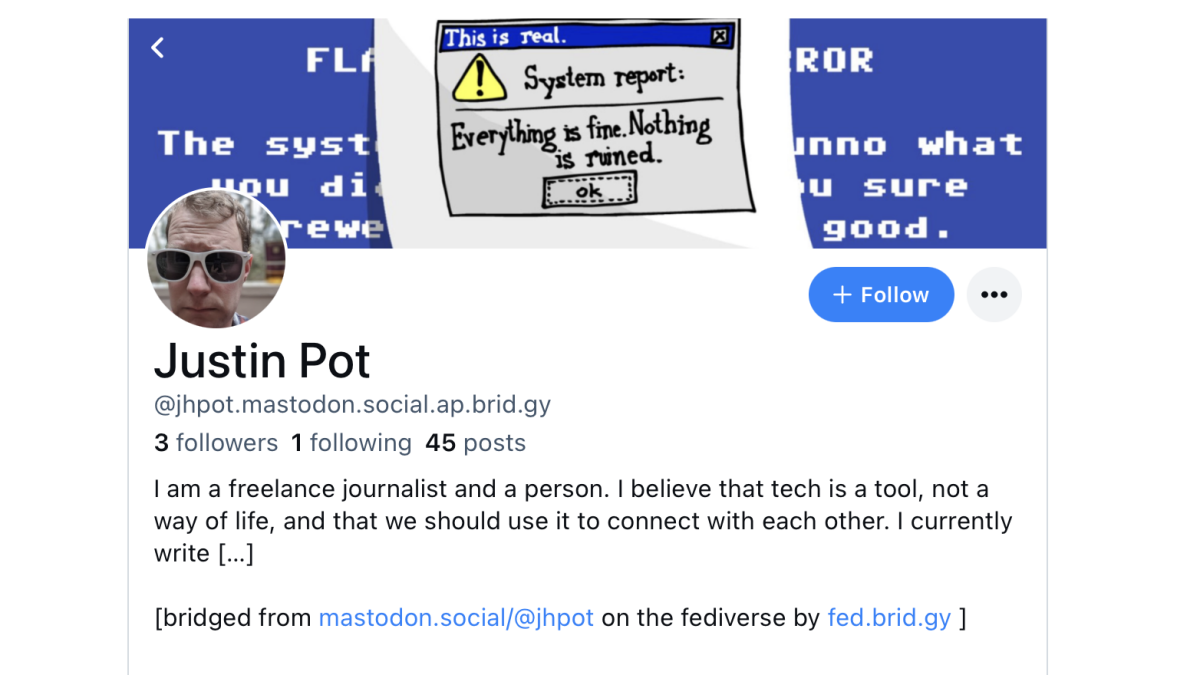The Great Twitter Exodus of 2022 is still happening. It’s just a little…fractured. A lot of X power users migrated to Bluesky early on, which paved the way for a flood of folks to join that service in 2024. Meanwhile, a lot of technically inclined individuals are still hanging out on Mastodon (at least, that’s where I hang out).
Bluesky and Mastodon are both decentralized services, in theory, but users of one service can’t really talk to users on the other—or it wasn’t possible before Bridgy Fed, anyway. It’s a beta service that makes it possible for Bluesky and Fediverse-compatible applications, such as Mastodon, to interact.
…
This is where Bridgy Fed comes in. With this service, individual users of either service can opt in to “bridging” their accounts. I tested this out with my friend and Lifehacker alumni Eric Ravenscraft, who hangs out on Bluesky more than me. It worked well—we can now see each other’s posts, like each other’s posts, and even talk to each other, cross-network.
…
While this solution works well, there are a few hangups. Chiefly, it only functions if both people bridge their accounts. This means I can’t see any comments from Bluesky users unless they also are bridged, and vice versa: During our little test, a few other Mastodon users responded to my conversation with Eric, but Eric could not see those replies. This make sense if you know how the system works—only comments from bridged users are bridged—but it’s hardly ideal, and can lead to asymmetrical conversations. Unfortunately, the opt-in nature of the bridging service makes this inevitable.
If you are already using Bridgy Fed, how is it working out for you?



You go to the settings and verify it. You don’t have to host anything, just verify that you own the domain via text file or DNS record and choose to set it as your handle. Bluesky’s ATProto has a couple extra layers of indirection and it’s very easy to get a custom handle as a result.
The downside of this setup is that running your own complete network is completely impossible. If you want to follow
theonion.com, anyone can finddid:plc:a4pqq234yw7fqbddawjo7y35in the DNS without too much work. That’s the identifier for The Onion’s Bluesky account, and even if they swapped back to.bsky.social, that ID number would stay. But that DID tells you absolutely nothing about where the data is currently hosted.So how do you figure that out? Well, you register it with https://plc.directory/ which is ran by Bluesky and cannot currently be replaced. There’s fancy cryptography involved that makes it hard for them to spoof data, but they are perfectly capable of simply not giving any data out for any given DID.